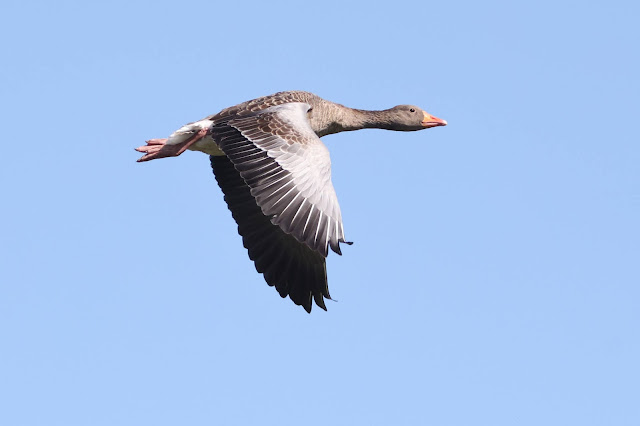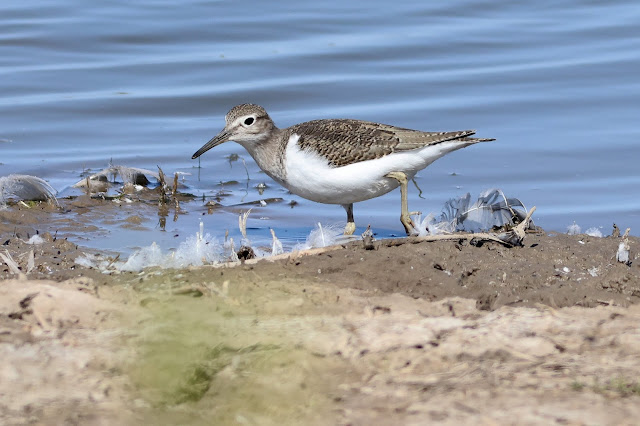28th August 2021
With Oare Marshes virtually out of action from a small wader point of view due to the high water levels, time for a return visit to Frampton Marsh. As usual the day started at the visitor centre with plenty of Greylag Geese to photograph both on the water and in flight. For some reason this small group were nibbling this post.
Lapwings are not only fairly numerous here but also very confiding, especially the juveniles like this one. Note the pale fringes to the feathers on the back.
The muddy margins rounds the pools outside the visitor centre were ideal for Common Sandpipers although most were fairly distant. Luckily this one was on the closest bank and gave some great opportunities.
There were an unbelievable 24 Spoonbills present out on the scrape, showing just how much they are becoming established. Sadly very distant today.
Along by the small car park the pools either side of the road produced a few close goodies starting with a couple of juvenile Avocets. On juveniles the black parts of the plumage are replaced with dark brown.
There was also a juvenile Little Ringed Plover with its pale brown plumage and pale eye-ring compared to the golden eye-ring of the adults. The last photo shows a comparison with a juvenile Ringed Plover with no eye-ring at all.
A single Snipe was feeding in the open, not a particularly common event, but also had time for a preen.
Along the sea wall the pools were devoid of waders for some reason but were home to just a handful of Little Grebes and some of the commoner ducks. There was however a Pintail, which could be a male, female, or juvenile as, due to the adults being in eclipse plumage at this time of year, they all look the same.
When I took this photo I had assumed it was a female Tufted Duck in flight, but on close inspection instead of the small amount of white that some female Tufties have either side of the bill, this particular bird has white all round the bill and is therefore a Scaup.
East Hide it was fairly busy once again and as usual Black-tailed Godwits were present in good numbers. However, today a single bird flew in and landed in front of the hide. The lack of wing-bar, slightly up-turned bill and scaly back said that this was a Bar-tailed Godwit, and if my memory serves me correct I have never seen a Bar-tailed at Frampton before.
Out of the side window were a few Spotted Redshanks, with a Ruff and Curlew Sandpiper in flight in the first photo and a Curlew Sandpiper in the second.
There were at least three Curlew Sandpipers present although unfortunately they kept their distance.
Here is one being photo-bombed by a Ruff.
Ruffs were well represented and were showing the usual range of plumages.
This individual chose a particularly calm pond which threw some great reflections.
So what about the Black Stork? Well we had walked round the reserve all day with nothing but negative news so everyone had assumed it had left the site. But then, just as I was driving out of the car park, a couple of people ran towards the visitor centre pointing at the sky. I quickly parked up and there was the Black Stork, several hundred feet in the air, gliding across a clear blue sky. How good is that?
Well that was a close thing and once again Frampton Marsh comes up trumps and I look forward to several more trips during the autumn and winter.















































No comments:
Post a Comment
Note: only a member of this blog may post a comment.